Mechlorethamine hydrochloride
Synonym(s):NM;Nitrogen mustard;N-Methylbis(2-chloroethyl)amine hydrochloride;2-Chloro-N-(2-chloroethyl)-N-methylethanamine;Bis(2-chloroethyl)methylamine
- CAS NO.:55-86-7
- Empirical Formula: C5H12Cl3N
- Molecular Weight: 192.51
- MDL number: MFCD00012517
- EINECS: 200-246-0
- SAFETY DATA SHEET (SDS)
- Update Date: 2025-08-08 17:45:00

What is Mechlorethamine hydrochloride?
Description
Nitrogen mustard (HN) was developed in three formulations: HN-1, HN-2, and HN-3. HN-1 was the first to be produced in the late 1920s and early 1930s. Originally, it was developed as a pharmaceutical and used to remove warts before it became a military agent. Agent H-2 was developed as a military agent and became a pharmaceutical. HN-3 was designed as a military mustard agent and is the only one that remains in military use. Therefore, this section will only cover the characteristics of HN-3 mustard agent. HN-3 is colorless to pale yellow with a butter-almond odor. The chemical formula for nitrogen mustard agent HN-3 is N(CH2CH2Cl)3. It will otherwise be ineffective against stopping the damage to the body.
Chemical properties
White Solid
Chemical properties
Highly toxic white to yellowish crystalline solid or powder. May be available as an unstable aqueous solution. Fish-like odor.
The Uses of Mechlorethamine hydrochloride
Mechlorethamine hydrochloride USP (Mustargen)is used to treat Hodgkin’s disease; non-Hodgkin’s lymphomas; lymphosarcoma; cancer of breast, ovary, lung; neoplastic effusion.
The Uses of Mechlorethamine hydrochloride
xanthine oxidase/dehydrogenase inhibitor
The Uses of Mechlorethamine hydrochloride
It has been used as an antineoplastic. A nitrogen mustard prepared by action of thionyl chloride on 2,2’(methylimino)- diethanol in trichloroethylene.
Definition
ChEBI: The hydrochloride salt of mechlorethamine.
Indications
Mechlorethamine (Mustargen) is a cytotoxic alkylating agent. Topical application of freshly prepared aqueous solutions are used in patients with early stages of cutaneous T-cell lymphoma. A major disadvantage to the use of this drug is the rapid induction of allergic contact dermatitis in some patients.
Indications
Mechlorethamine (nitrogen mustard; Mustargen), a derivative of the war gas sulfur mustard, is considered to be the first modern anticancer drug. In the early 1940s it was discovered to be effective in the treatment of human lymphomas.
brand name
Mustargen (Ovation).
Biological Functions
Mechlorethamine is still used in regimens for cancers of the blood (e.g., Hodgkin's disease, chronic myelocytic, or chronic lymphocytic leukemia); fortunately, however, safer and still highly potent antineoplastic agents are now available.
General Description
White to off-white crystals or powder with a fishy odor. Initial pH (2% aqueous solution) 3.0-4.0.
General Description
Mechlorethamine is available in 10-mg vials for intravenous(IV) administration in the treatment of Hodgkin’slymphoma. It is part of the MOPP regimen used in treatingthis condition, which is comprised of mechlorethamine,vincristine (Oncovin), procarbazine, and prednisone. Theagent is also used topically in the treatment of mycosis fungoides,a rare type of cancer but the most common type ofcutaneous T-cell lymphoma. Additional uses have includedtreatment of cancers that have resulted in pleural effusion.Although the compound is a potent alkylating agent, resistancemay develop as a result of increased inactivation bysulfhydryl containing proteins such as glutathione andincreased expression of DNA repair mechanisms. Adverseeffects include dose-limiting myelosuppression and nausea/vomiting. There is a significant risk of extravasationupon IV administration, and the agent may produce painat the injection site. Additional adverse effects include alopecia, azoospermia, amenorrhea, hyperuricemia, and anincreased risk of secondary cancers.
Air & Water Reactions
Hygroscopic. Water soluble.
Reactivity Profile
Dry crystals are stable at temperatures up to 104° F. Chlormethine hydrochloride is incompatible with strong oxidizing agents. .
Hazard
Highly toxic, vesicant, and strongly irritant to mucous membranes.
Fire Hazard
Flash point data for Chlormethine hydrochloride are not available. Chlormethine hydrochloride is probably combustible.
Mechanism of action
Mechlorethamine in aqueous solution loses a chloride
atom and forms a cyclic ethylenimmonium ion.This
carbonium ion interacts with nucleophilic groups, such
as the N7 and O6 of guanine, and leads to an interstrand
cross-linking of DNA. Although there is great variation
among normal and tumor tissues in their sensitivity to
mechlorethamine, the drug is generally more toxic to
proliferating cells than to resting or plateau cells.
Mechlorethamine has a chemical and biological half-life
in plasma of less than 10 minutes after intravenous injection.
Little or no intact drug is excreted in urine.
The major indication for mechlorethamine is
Hodgkin’s disease; the drug is given in the MOPP regimen. Other less reactive nitrogen
mustards are now preferred for the treatment of non-
Hodgkin’s lymphomas, leukemias, and various solid
tumors.
Clinical Use
Mechlorethamine is the only aliphatic nitrogen mustard currently on the U.S. market. Its use is limited by extremely high reactivity, which leads to rapid and nonspecific alkylation of cellular nucleophiles and excessive toxicity. It is a severe vesicant, and if accidental skin contact occurs, the drug must be inactivated with 2% sodium thiosulfate (Na2S2O3) solution.
Side Effects
The dose-limiting toxicity of mechlorethamine is myelosuppression; maximal leukopenia and thrombocytopenia occur 10 to 14 days after drug administration, and recovery is generally complete at 21 to 28 days. Lymphopenia and immunosuppression may lead to activation of latent herpes zoster infections, especially in patients with lymphomas. Mechlorethamine will affect rapidly proliferating normal tissues and cause alopecia, diarrhea, and oral ulcerations. Nausea and vomiting may occur 1 to 2 hours after injection and can last up to 24 hours. Since mechlorethamine is a potent blistering agent, care should be taken to avoid extravasation into subcutaneous tissues or even spillage onto the skin. Reproductive toxicity includes amenorrhea and inhibition of oogenesis and spermatogenesis. About half of premenopausal women and almost all men treated for 6 months with MOPP chemotherapy become permanently infertile. The drug is teratogenic and carcinogenic in experimental animals.
Safety Profile
Confirmed carcinogen withexperimental carcinogenic, neoplastigenic, andtumorigenic data. Deadly poison by ingestion,intravenous, subcutaneous, intraperitoneal, and parenteralroutes. Experimental teratogenic and reproductive effects.Human systemic eff
Synthesis
Mechlorethamine, bis-(2-chloroethyl)methylamine (30.2.1.2), is made by reacting methylamine with ethylene oxide, forming bis-(2-hydroxyethyl)methylamine (30.2.1.1), which upon reaction with thionyl chloride turns into the desired mechlorethamine.

Carcinogenicity
Nitrogen mustard hydrochloride is reasonably anticipated to be a human carcinogen based on sufficient evidence of carcinogenicity from studies in experimental animals. In the literature, the names “nitrogen mustard” and “nitrogen mustard hydrochloride” are used interchangeably. Only nitrogen mustard hydrochloride is produced commercially, so it is assumed that nitrogen mustard hydrochloride was used in all cancer studies in animals reported below.
Shipping
UN2928 Toxic solids, corrosive, organic, n.o.s., Hazard Class: 6.1; Labels: 6.1-Poisonous materials, 8-Corrosive material, Technical Name Required. UN2811 Toxic solids, organic, n.o.s., Hazard Class: 6.1; Labels: 6.1-Poisonous materials, Technical Name Required.
Waste Disposal
It is not appropriate to dispose of expired or waste product such as lab chemicals by flushing them down the toilet or discarding them to the trash. Larger quantities shall carefully take into consideration applicable EPA, and FDA regulations. If possible return the lab chemicals to the manufacturer for proper disposal being careful to properly label and securely package the material. Alternatively, the waste lab chemicals shall be labeled, securely packaged and transported by a state licensed medical waste contractor to dispose by burial in a licensed hazardous or toxic waste landfill or incinerator.
Properties of Mechlorethamine hydrochloride
| Melting point: | 108-111 °C(lit.) |
| Boiling point: | 315.95°C (rough estimate) |
| Density | 1.4424 (rough estimate) |
| refractive index | 1.6300 (estimate) |
| storage temp. | −20°C |
| solubility | H2O: very soluble |
| pka | pKa 6.43 (Uncertain) |
| form | Solid |
| color | Leaflets from Me2CO or CHCl3 |
| Sensitive | Hygroscopic |
| Merck | 13,5798 |
| Stability: | Stable. Hygroscopic. |
| CAS DataBase Reference | 55-86-7(CAS DataBase Reference) |
| EPA Substance Registry System | Nitrogen mustard (HN-2), hydrochloride (55-86-7) |
Safety information for Mechlorethamine hydrochloride
| Signal word | Danger |
| Pictogram(s) |
 Corrosion Corrosives GHS05  Skull and Crossbones Acute Toxicity GHS06  Health Hazard GHS08 |
| GHS Hazard Statements |
H314:Skin corrosion/irritation H340:Germ cell mutagenicity H350:Carcinogenicity |
| Precautionary Statement Codes |
P202:Do not handle until all safety precautions have been read and understood. P260:Do not breathe dust/fume/gas/mist/vapours/spray. P280:Wear protective gloves/protective clothing/eye protection/face protection. P303+P361+P353:IF ON SKIN (or hair): Remove/Take off Immediately all contaminated clothing. Rinse SKIN with water/shower. P305+P351+P338:IF IN EYES: Rinse cautiously with water for several minutes. Remove contact lenses, if present and easy to do. Continuerinsing. |
Computed Descriptors for Mechlorethamine hydrochloride
New Products
Indole Methyl Resin tert-butyl 9-methoxy-3-azaspiro[5.5]undecane-3-carboxylate Boc-His(Boc)-OH 2-CTC Resin 4-Chloro-7-tosy1-7Hpyrrolo[2,3-d]pyrimidine 5,7-Dibromo-1H-indole 2,5-dichloro-N-hydroxy-4,6-dimethylpyridine-3-carboximidamide 2,2-Dimethoxy-7-azaspiro[3.5]nonane hydrochloride 4-chloromethyl-5-methyl-1,3-dioxol-2-one (DMDO-Cl) R-2-BENZYLOXY PROPIONIC ACID 1,1’-CARBONYLDIIMIDAZOLE 1,1’-CARBONYLDI (1,2-4 TRIAZOLE) N-METHYL INDAZOLE-3-CARBOXYLIC ACID 4-((2-hydroxyethyl)thio)benzoic acid 1-(TERT-BUTOXYCARBONYL)-2-PYRROLIDINONE Methyl 6-methylnicotinate 3-Pyridineacrylic acid tert-Butyl carbazate TETRAHYDRO-2H-PYRAN-3-OL 2-((4-morpholinophenylamino) (methylthio) methylene) malononitrile 3-(4-morpholinophenylamino)-5-amino-1H-pyrazole-4-carbonitrile 2,4-dihydroxybenzaldehyde 1,3-Diethyl-1,3-Diphenylurea Methyl 2-methylquinoline-6-carboxylateRelated products of tetrahydrofuran


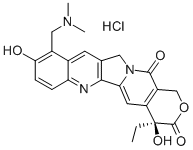
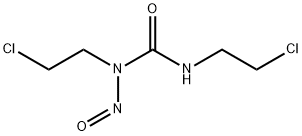
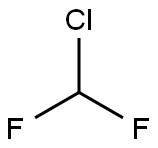
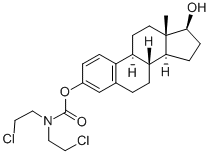

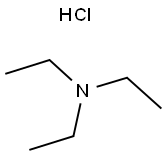
You may like
-
 Mechlorethamine hydrochloride 97.00% CAS 55-86-7View Details
Mechlorethamine hydrochloride 97.00% CAS 55-86-7View Details
55-86-7 -
 Pyridine 99.5% HPLC /UV SpectroscopyView Details
Pyridine 99.5% HPLC /UV SpectroscopyView Details
110-86-1 -
 Guanine , 99%View Details
Guanine , 99%View Details
73-40-5 -
 Piperazine Spot supply, best priceView Details
Piperazine Spot supply, best priceView Details
110-85-0 -
 Dibutyl PhthalateView Details
Dibutyl PhthalateView Details
84-74-2 -
 Imidazole Spot supply, competitive priceView Details
Imidazole Spot supply, competitive priceView Details
288-32-4 -
 Octadecyl 3-(3,5-di-tert-butyl-4-hydroxyphenyl)propionate 98% (GC)View Details
Octadecyl 3-(3,5-di-tert-butyl-4-hydroxyphenyl)propionate 98% (GC)View Details
2082-79-3 -
 Thiourea 99% ARView Details
Thiourea 99% ARView Details
62-56-6
